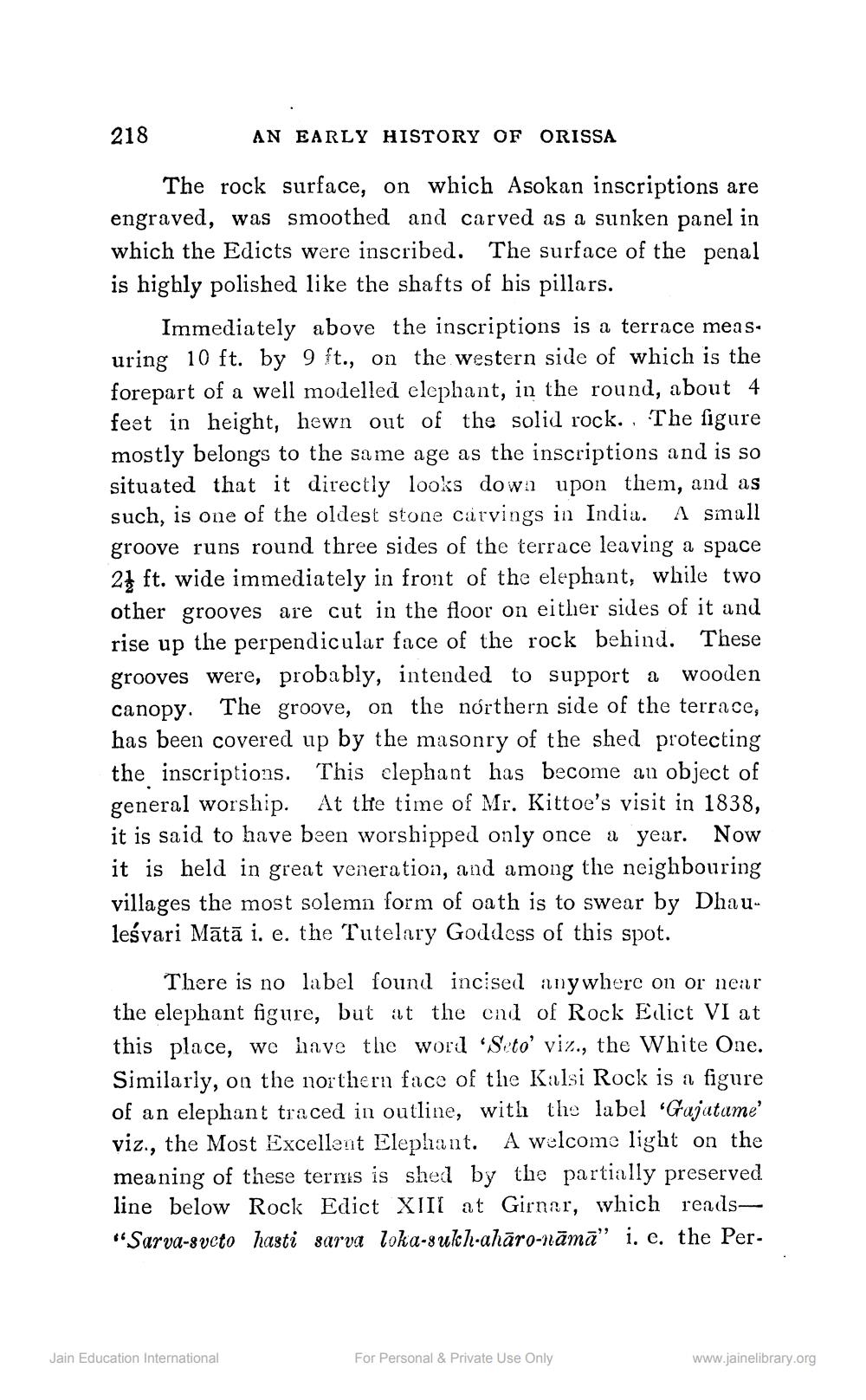________________
218
AN EARLY HISTORY OF ORISSA
The rock surface, on which Asokan inscriptions are engraved, was smoothed and carved as a sunken panel in which the Edicts were inscribed. The surface of the penal is highly polished like the shafts of his pillars.
Immediately above the inscriptions is a terrace measuring 10 ft. by 9 ft., on the western side of which is the forepart of a well modelled elephant, in the round, about 4 feet in height, hewn out of the solid rock. . The figure mostly belongs to the same age as the inscriptions and is so situated that it directly looks down upon them, and as such, is one of the oldest stone carvings in India. A small groove runs round three sides of the terrace leaving a space 21 ft. wide immediately in front of the elephant, while two other grooves are cut in the floor on either sides of it and rise up the perpendicular face of the rock behind. These grooves were, probably, intended to support a wooden canopy. The groove, on the northern side of the terrace, has been covered up by the masonry of the shed protecting the inscriptions. This clephant has become an object of general worship. At the time of Mr. Kittoe's visit in 1838, it is said to have been worshipped only once a year. Now it is held in great veneration, and among the neighbouring villages the most solemn form of oath is to swear by Dhauleśvari Mātā i. e. the Tutelary Goddess of this spot.
There is no label found incised anywhere on or near the elephant figure, but at the end of Rock Edict VI at this place, we have the word 'Seto' viz., the White One. Similarly, on the northern face of the Kalsi Rock is a figure of an elephant traced in outline, with the label "Gajatume' viz., the Most Excellent Elephant. A welcome light on the meaning of these terms is shed by the partially preserved line below Rock Edict XIII at Girnar, which reads“Sarva-sveto hasti sarva loka-sukh-ahāro-nāmā" i. e. the Per
Jain Education International
For Personal & Private Use Only
www.jainelibrary.org




